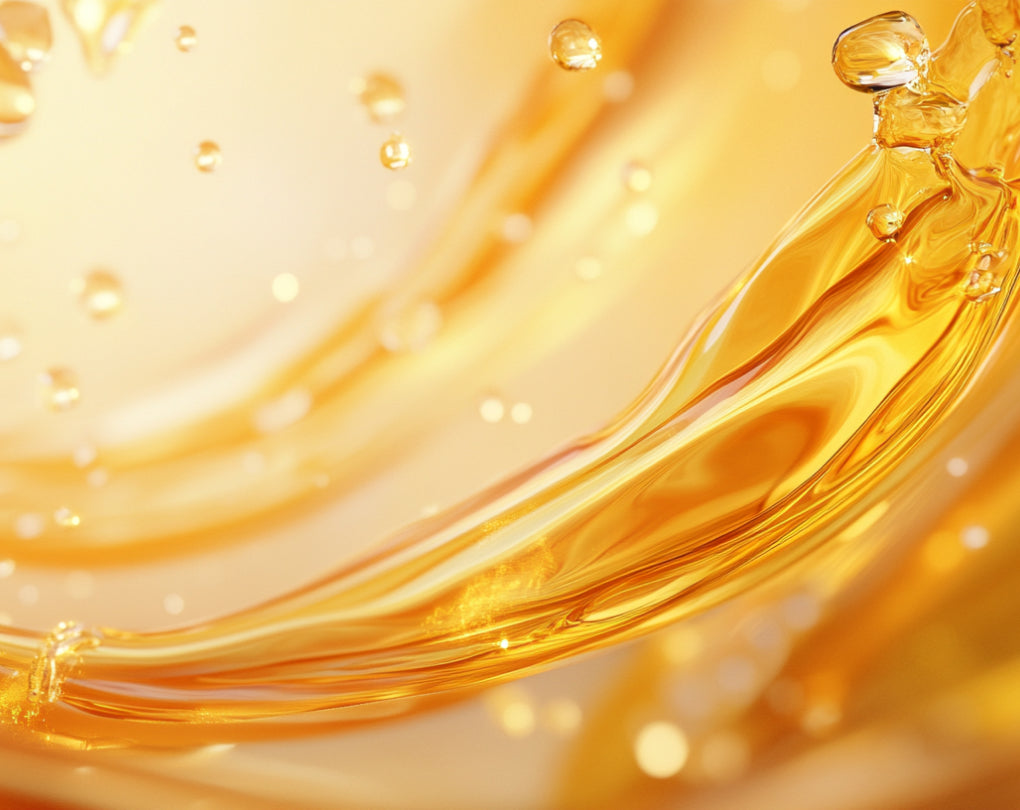Themen dieses Blogartikels:
What is iodine?
Iodine is an essential mineral that belongs to the trace elements. In the periodic table of elements, iodine is in the 17th group, the halogens. The name comes from the Greek and can be translated as “violet-colored”. This is because the vapors released when heated are violet.1
What are the functions of iodine?
Iodine is an important trace element for hormone balance: the thyroid gland produces the hormones thyroxine and triiodothyronine from iodine. These are involved in many processes in the body, such as bone formation and energy metabolism.2 Thyroid hormones are also needed to regulate the heat balance.3 For children, iodine is important during growth phases and for brain development.4
Advertisement
- 150µg iodine per capsule - 170 capsules per jar
- Organic iodine from kelp algae from natural & sustainable cultivation
- Supplemented with the traditional organic mushroom Agaricus Blazei Murrill
- No fillers – with pullulan capsules from organic farming
- Vegan and vegetarian, as well as gluten and lactose free
- Certified according to EU organic standards and regularly tested for quality and purity

What makes iodine unique?
Iodine is often only mentioned in connection with the thyroid gland, but all human organ systems are dependent on this trace element. The thyroid gland accounts for around 50 percent of the iodine contained in the body. However, it is also found in numerous other types of tissue - above all in the nervous system.5
Good to know: Although iodine is a mineral and therefore inorganic, it is a potentially powerful antioxidant.6 It also has an antiseptic effect, which is why iodine is also used to disinfect wounds and for sterilization in operating theatres7
How much iodine do you need per day?
Iodine is a vital trace element that the body cannot produce itself. It must therefore be ingested through food. The German Nutrition Society (DGE) gives the following reference values for the recommended iodine intake8:
| Age | Iodine Germany, Austria µg/day | Iodine WHO, Switzerland µg/day |
| Infants | ||
| 0 to under 4 months | 40 | 50 |
| 4 to under 12 months | 80 | 50 |
| Children and young people | ||
| 1 to under 4 years | 100 | 90 |
| 4 to under 7 years | 120 | 90 |
| 7 to under 10 years | 140 | 120 |
| 10 to under 13 years | 180 | 120 |
| 13 to under 15 years | 200 | 150 |
| 15 to under 19 years | 200 | 150 |
| Adults | ||
| 19 to under 25 years | 200 | 150 |
| 25 to under 51 years | 200 | 150 |
| 51 to under 65 years | 180 | 150 |
| 65 years and older | 180 | 150 |
| Pregnant women | 230 | 200 |
| Breastfeeding | 260 | 200 |
When do you need iodine most?
Pregnant women and breastfeeding mothers, for example, have an increased requirement. Iodine is important for the development of the embryonic nervous system, among other things. In newborns, an iodine deficiency can even be fatal. (Expectant) mothers should discuss with their doctor whether additional iodine supplementation is necessary during pregnancy and breastfeeding.9 Vegans should also make sure they have an adequate iodine intake, as they avoid iodine sources such as sea fish, milk and dairy products due to their diet. If necessary, they should take an iodine supplement if their doctor advises them to do so.10 In addition, smokers have an increased risk of developing an iodine deficiency. This is because the thiocyanate contained in cigarettes prevents the thyroid gland from absorbing iodine.11
How does an iodine deficiency develop and how does it manifest itself?
Iodine deficiency is widespread in this country. According to information from the Robert Koch Institute (RKI), around one in three adults in Germany does not get enough iodine. Among children, as many as 44 percent do not get enough iodine. The reason: German soils do not contain enough of this mineral, which is why domestic agricultural products have a low iodine content.12 A gradually developing iodine deficiency can cause a whole range of non-specific symptoms, including tiredness, concentration problems and increased sensitivity to cold. If the iodine deficiency persists over a longer period of time, the thyroid gland can become enlarged and a goitre forms.13
What happens if there is an overdose of iodine?
According to the Federal Institute for Risk Assessment (BfR), a maximum intake of 500 micrograms of iodine per day is still considered safe in Germany.14 This value is not normally exceeded due to dietary factors; caution is only advised when consuming algae products with a high iodine content.15 An excess of iodine is therefore usually due to the intake of iodine-containing preparations. Possible consequences can be increased saliva production, digestive disorders and skin rashes. And: Even with an extreme iodine oversupply, a goitre can develop, just as with iodine deficiency.16
Which foods are particularly high in iodine?
Seaweed in particular contains a lot of iodine. Sea fish, milk and eggs are also good sources of iodine, provided the animals have been fed accordingly. The German Nutrition Society (DGE) also advises using iodized table salt in the kitchen.17
This dictionary entry is based on carefully researched sources:
Bibliography & Sources
- chemie.de/lexikon/Iod.html
- bfr.bund.de/de/a-z_index/jod-4600.html
- bmel.de/DE/themen/ernaehrung/gesunde-ernaehrung/box-jod-studie.html
- berufsverband-nuclearmedizin.de/presse/pressereleases/melde/news/jod-important-fuer-die-gehirnentwicklung-von-kindern/
- gesundheit.gv.at/leben/ernaehrung/vitamin-mineralstoffe/pfadelemente/jod.html
- kloesterl-apotheke.de/naehrstoff-lexikon/jod/
- apotheke-adhoc.de/nachrichten/detail/pta-live/povidon-iod-verkanntes-antisepticum-klasseiker-ruecken-wieder-in-den-focused/
- dge.de/science/reference values/jod/
- apotheke-am-medizinzentrum.de/gesundheitsbibliothek/index/jod/
- dge.de/gesunde-ernaehrung/faq/faqs-vegane-ernaerung
- apotheke-am-medizinzentrum.de/gesundheitsbibliothek/index/jod/
- focus.de/gesundheit/ernaehrung/news/jeder-dritte-betroffen-sechs-stumme-anzeichen-dass-sie-zu-wenig-jod-bekommen_id_160184795.html
- netdoktor.de/laborwerte/jod/jodlack/
- bfr.bund.de/de/a-z_index/jod-4600.html













